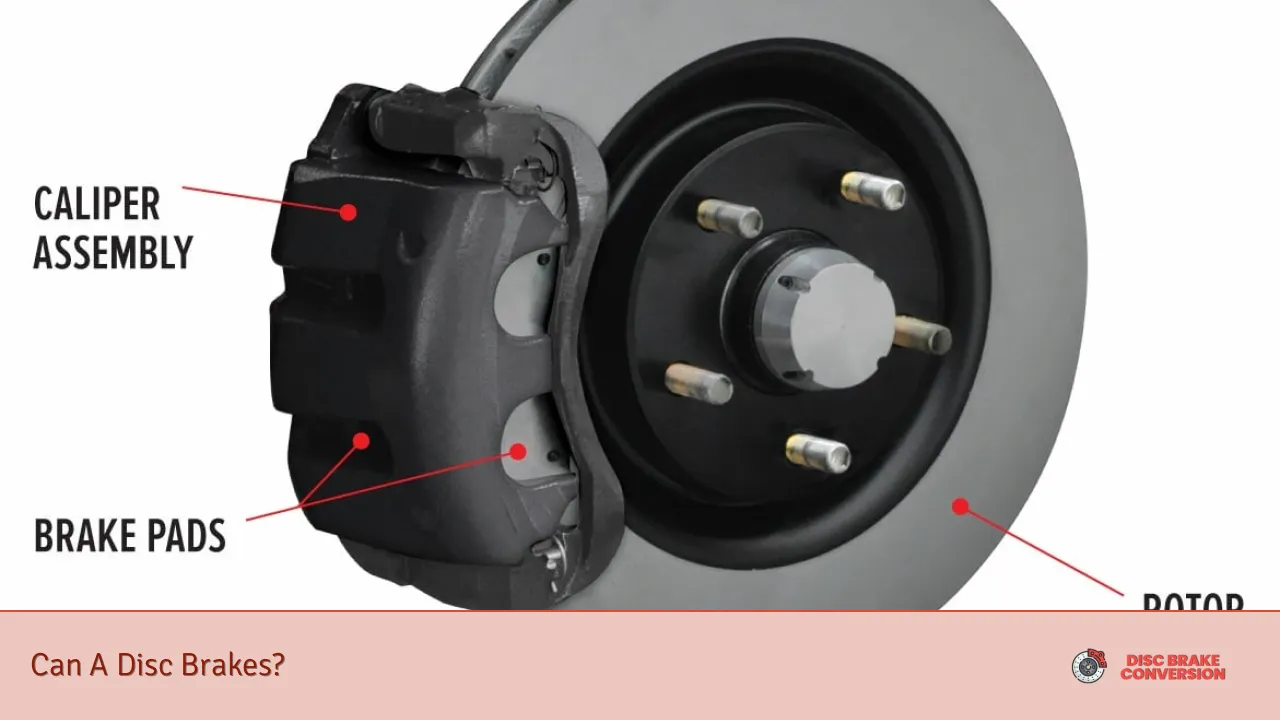Disc brakes are a vital component in modern automotive and bicycle braking systems, providing efficient stopping power and enhanced safety. They work by using friction to slow down or stop a vehicle, converting kinetic energy into heat energy through the interaction between brake pads and a rotating disc (or rotor). This system is favored for its consistent performance across various conditions, making it essential for both everyday vehicles and high-performance machines.
The basic operation of disc brakes involves several key components: the brake disc, caliper, brake pads, and hydraulic system. When the driver presses the brake pedal, hydraulic fluid is forced through lines to the caliper, which then pushes the brake pads against the disc. This action creates friction, slowing down the wheel’s rotation. The design of disc brakes allows for better heat dissipation compared to drum brakes, reducing the risk of brake fade during prolonged use.
| Component | Function |
|---|---|
| Brake Disc | Rotating component that interacts with brake pads to create friction. |
| Caliper | Holds the brake pads and applies pressure against the disc. |
| Brake Pads | Friction material that presses against the disc to slow down or stop the vehicle. |
| Hydraulic System | Transfers force from the brake pedal to the caliper. |
Understanding Disc Brakes
Disc brakes have evolved significantly since their introduction, becoming a standard feature in most vehicles today. They are particularly beneficial in high-performance applications due to their ability to maintain consistent braking under extreme conditions.
Components of a Disc Brake System
The brake disc, often made from cast iron or carbon-ceramic materials, is attached directly to the wheel hub. It rotates with the wheel and is designed to dissipate heat effectively. The caliper houses one or more pistons that push the brake pads against the disc when braking is initiated.
The brake pads are made from various materials designed to withstand high temperatures and provide excellent friction characteristics. Finally, the hydraulic system is crucial as it converts mechanical force from the brake pedal into hydraulic pressure, enabling effective braking.
Types of Disc Brakes
There are two primary types of disc brakes: floating (or sliding) calipers and fixed calipers. Floating calipers have pistons on one side that move the caliper body towards the rotor when pressure is applied, while fixed calipers have pistons on both sides of the rotor, providing more consistent pressure across the brake pads.
Advantages of Disc Brakes
Disc brakes offer several advantages over traditional drum brakes, making them a preferred choice for many vehicles:
- Better Heat Dissipation: Disc brakes cool more quickly due to their exposure to air, reducing the risk of overheating.
- Consistent Performance: They provide reliable stopping power in various weather conditions, including rain and mud.
- Self-Cleaning Ability: The design helps remove debris from the braking surface, maintaining optimal performance.
- Easier Maintenance: Brake pads can be inspected and replaced with relative ease compared to drum systems.
These benefits contribute significantly to vehicle safety and performance.
Disadvantages of Disc Brakes
While disc brakes have many advantages, they also come with some drawbacks:
- Cost: Generally more expensive than drum brakes due to their complex design and materials.
- Weight: They can add extra weight to a vehicle compared to simpler drum systems.
- Noise: Under certain conditions, disc brakes may produce more noise than drum brakes.
Despite these disadvantages, their benefits often outweigh them in most applications.
Maintenance of Disc Brakes
Regular maintenance is crucial for ensuring optimal performance and longevity of disc brakes. Here are some essential maintenance tips:
- Inspect Brake Pads Regularly: Check for wear and replace them before they become too thin.
- Monitor Brake Fluid Levels: Ensure that brake fluid is at appropriate levels and free from contamination.
- Clean Brake Components: Regularly clean dust and debris from brake discs and pads to prevent performance issues.
By following these maintenance practices, drivers can enhance their vehicle’s braking efficiency and safety.
Common Issues with Disc Brakes
Disc brakes can experience several common issues that may affect performance:
- Brake Fade: Occurs when excessive heat builds up during prolonged braking, leading to reduced effectiveness.
- Warped Discs: Can happen due to uneven heating or excessive wear, causing vibrations during braking.
- Squeaking or Grinding Noises: Often indicative of worn-out brake pads or debris lodged between components.
Addressing these issues promptly can help maintain safe driving conditions.
FAQs About Can A Disc Brakes
- What are disc brakes?
Disc brakes are a type of braking system that uses friction between brake pads and a rotating disc to slow down or stop a vehicle. - How do disc brakes work?
When you press the brake pedal, hydraulic fluid pushes pistons in the caliper, forcing brake pads against the disc to create friction. - What are the advantages of using disc brakes?
Disc brakes offer better heat dissipation, consistent performance in various conditions, self-cleaning properties, and easier maintenance. - What maintenance do disc brakes require?
Regular inspections of brake pads, monitoring fluid levels, and cleaning components are essential for maintaining disc brakes. - What common problems occur with disc brakes?
Common issues include brake fade, warped discs, and unusual noises indicating wear or debris interference.
In conclusion, understanding how disc brakes function is vital for anyone involved in vehicle maintenance or ownership. Their advantages make them a popular choice across various applications—from everyday cars to high-performance vehicles—ensuring safety and reliability on the road. Regular maintenance can help mitigate common issues and extend their lifespan significantly.

